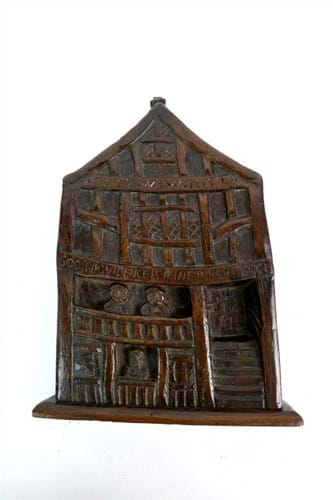
Although the civil war siege of Chester had been lifted with the surrender of the city on February 3, 1646, the effects of famine and other privations were such that in 1647 the plague broke out. From June 22-April 20, 1648, more than 2000 people died of disease: over a third of the population.
The carved vernacular oak panel estimated at £800-1200 at the auction held by Halls of Shrewsbury portrays the facade of God’s Providence House, 9 Watergate Street, Chester. The building was reputedly left untouched by the plague while everyone in every other house in the street was killed.
That seemingly miraculous event inspired this thank-you carving to God for being spared a dreadful and all too common fate. On the panel the words Gods Providence Is Mine Inheritance are inscribed below an image of the house that was spared.
Jeremy Lamond, director of Halls Fine Art, says the plaque was brought in by a client who was not sure of its provenance.
“I was aware of the story and of the house of which this carving is an illustration, but I could not be sure if there was a direct link until I saw the date 1652 carved into the panel,” adds Lamond. “That is the precise date when the house was rebuilt. Then I was sure that this dedication panel and its thanks to divine providence was the real thing, an object that once decorated the God’s Providence House at 9 Watergate Street, Chester.”
Family ownership
For the last century the panel has been in the same local family. It was owned by Robert Beswick (1884-1973) who was the grandfather of the present owner, Juliet Blackie.
Beswick was a Staffordshire solicitor and entrepreneur, and a connoisseur and collector of historic artefacts. He began collecting in his teens and probably owned the panel by the Edwardian period. He was an active member of archaeological and antiquarian societies. For most of his life, he lived in Newcastle under Lyme and later Stone in Staffordshire. He was related to the Beswick family of potters although was not a potter himself.

The 17th century God's Providence House in Chester as it appeared from 1652 until it was reconstructed in the 19th century.
The original God’s Providence House was believed to date from the 13th century. It was destroyed and rebuilt in 1652, then reconstructed in 1862. The present building does still display the inscription: Gods providence is mine inheritance.





